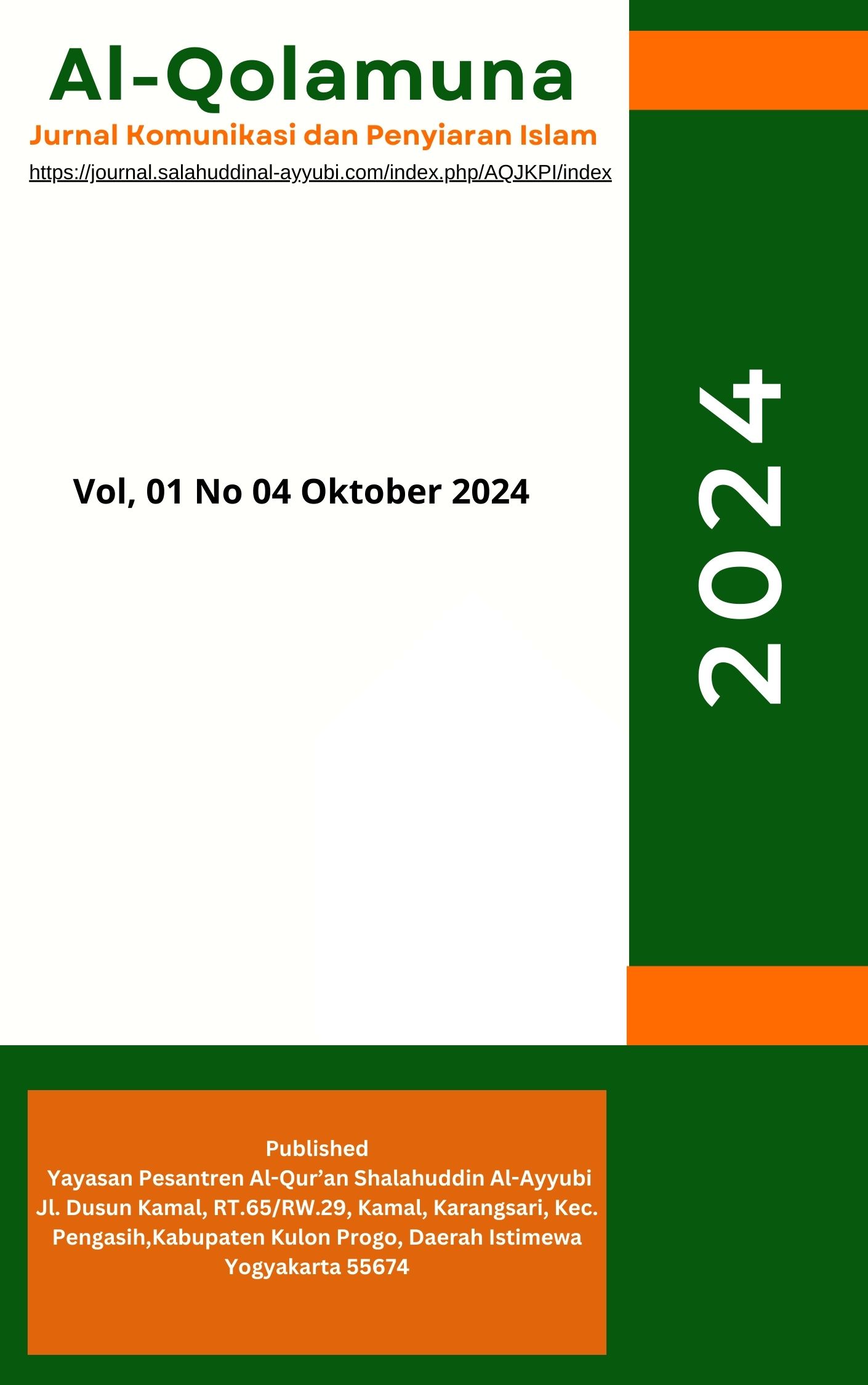Retorika Dakwah Habib Rizieq Syihab Dalam Fenomena 212
DOI:
https://doi.org/10.71242/y2bvsv92Keywords:
Retorika Dakwah, Habib Rizieq, 212Abstract
Penelitian ini berjudul “Retorika Dakwah Habib Rizieq Syihab Dalam Fenomena 212”, pada penelitian ini peneliti lebih fokus untuk menganalisa penerapan retorika di dalam dakwah Habib Rizieq dengan model penelitian kualitatif. Adapun Teknik analisis yang digunakan yaitu pertama peneliti mengumpulkan data-data yang akan dikaji dari media youtube kemudian peneliti mentranskrip data-data tersebut dan langkah selanjutnya peneliti menganalisa penerapan retorika dalam dakwah yang di oralkan oleh Habib Rizieq Syihab pada fenomena 212 yang bertempat di Monas. Adapun pisau analisis yang digunakan peneliti dalam penelitian ini yaitu berangkat dari teori Retorika Aristoteles yang terdapat dari poin pertama yaitu mengkaji tentang pengertian retorika. Retorika sendiri yaitu sebagai seni berbicara. Kedua tentang model-model persuasif retorika yang melingkupi ethos, logos, dan pathos. Ketiga mengkaji tentang hukum-hukum retorika yang menurut Aristoteles memiliki lima hukum yaitu Inventio, Desposito, Ekucatio, Memoria, dan Pronuntiatio.Keempat mengkaji tentang bentuk-bentuk pesan retorika yaitu Informatif, Persuasif, dan Koersif. Kelima mengkaji tentang jenis-jenis retorika yang melingkupi Pidato Politik, Pidato Forensik, dan Pidato Epideiktik. Adapun pendekatan peneliti dalam melakukan penelitian ini dengan menggunakan pendekatan riset naratif yaitu mengkaji tentang fenomena yang terjadi dan tutur kata. Dalam penelitian ini peneliti mencoba untuk menganalisa penerapan retorika di dalam dakwah yang dilakukan oleh Habib Rizieq Syihab dalam fenomena 212.
Kata Kunci: Retorika Dakwah, Habib Rizieq, 212
Abstract
This study is entitled "Habib Rizieq Syihab's Preaching Rhetoric in the 212 Phenomenon", in this study the researcher focuses more on analyzing the application of rhetoric in Habib Rizieq's preaching with a qualitative research model. The analysis technique used is first the researcher collects data to be studied from YouTube media then the researcher transcribes the data and the next step the researcher analyzes the application of rhetoric in preaching orally by Habib Rizieq Syihab in the 212 phenomenon which took place at Monas. The analytical tool used by the researcher in this study is based on Aristotle's Rhetoric theory which is found in the first point, namely studying the definition of rhetoric. Rhetoric itself is the art of speaking. Second, about persuasive models of rhetoric that encompass ethos, logos, and pathos. The third examines the laws of rhetoric which according to Aristotle have five laws, namely Inventio, Desposito, Ekucatio, Memoria, and Pronuntiatio. The fourth examines the forms of rhetorical messages, namely Informative, Persuasive, and Coercive. The fifth examines the types of rhetoric that encompass Political Speech, Forensic Speech, and Epideictic Speech. The researcher's approach in conducting this research is to use a narrative research approach, namely examining the phenomena that occur and speech. In this study, the researcher tries to analyze the application of rhetoric in the preaching carried out by Habib Rizieq Syihab in the 212 phenomenon.
References
Abdullah. “Retorika Dan Dakwah Islam.” Jurnal Dakwah X, no. 1 (2009): 107.
Abdullah, Assyari. “Membaca Komunikasi Politik Gerakan Aksi Bela Islam 212: Antara Politik Identitas Dan Ijitihad Politik Alternatif.” Jurnal An- Nida’ 41, no. 2 (2017): 202–12.
Hifzanul Hanif. Telaah Retorika Dakwah Muhammad Arifin Ilham, 2013.
Noviyanto, Kholid dan Sahroni. A. Jaswadi. “Gaya Retorika Da ’ i Dan Perilaku Memilih Penceramah.” Jurnal Komunikasi Islam 04, no. 1 (2014): 123.
Nusantari, Septirini Sekar. “Gaya Selingkung Pada Artikel Jurnal Artikulasi,Retorika, Dan Bahtera,” n.d., 5.
Suardi. “Urgensi Retorika Dalam Persfektif Islam Dan Persepsi Masyarakat.” Jurnal An-Nida’ 41, no. 2 (2017): 130–34.
Syafiq Din, Muhammad, and Ahmad Irdha Mokhtar. “Pelaksanaan Konsep Amar Makruf Nahi Mungkar Dalam Persatuan Pengguna Islam Malaysia (PPIM).” JPI Jurnal Pengajian Islam 15, no. I (2022): 171–86. https://jpi.uis.edu.my/index.php/jpi/article/view/161/121.













